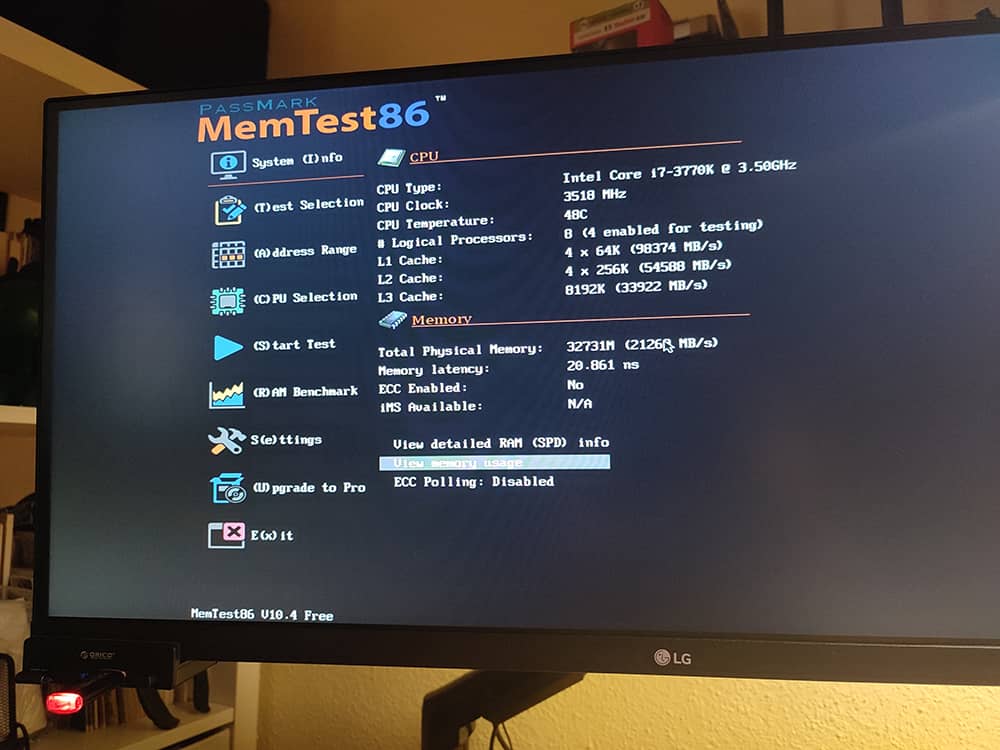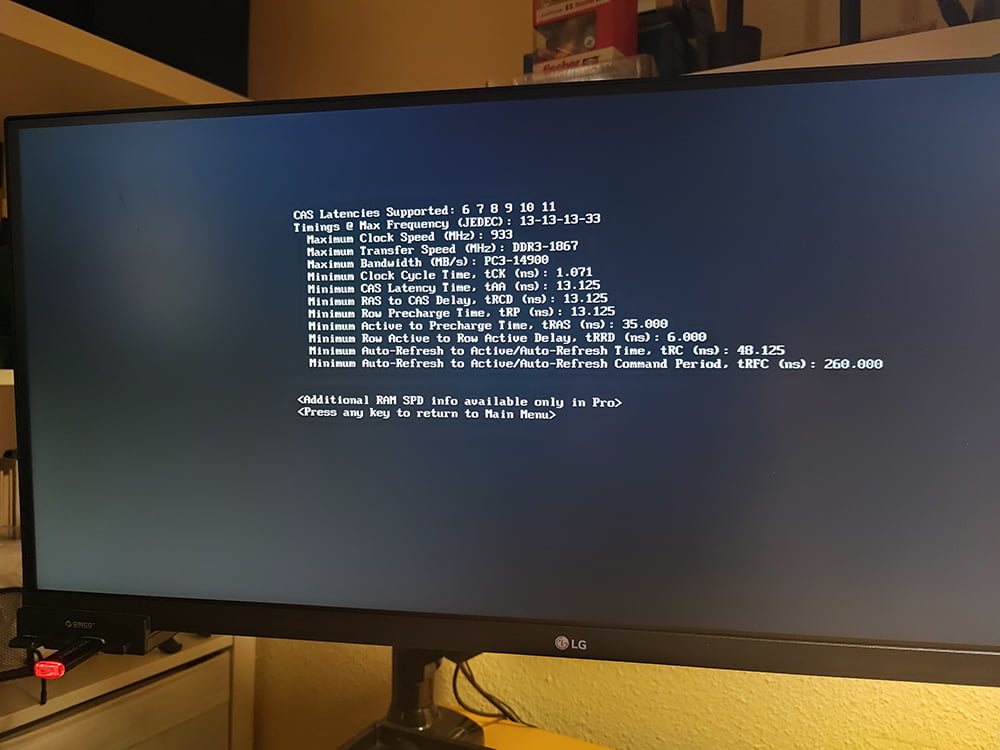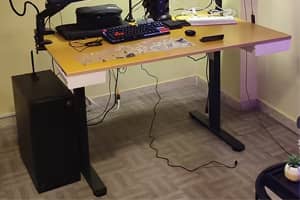Speed and latency
And these are their latencies measured with CPU-Z (left) and AIDA 64 (right), paid with trial version)

And these are the new ones. For what they cost, some buyers suggest that they may be fake. This is likely. However, I haven't found the supposed differences in mine and it's more likely that they are old but original units.

And there they are already in place. Their installation has little to explain. You just have to be sure that they are compatible with your board and that it supports the expansion. Then just remove the old ones and insert the new ones. Occasionally you will have to set the speed from the BIOS if it doesn't recognise them automatically.

4 new 8GB DDR3, 1866 Mhz modules (Kingston HyperX Fury).
Make, model, speeds and latency: Kingston HX318C10F/8 8 GB DDR3-1866 DDR3 SDRAM (11-11-11-30 @ 838 MHz) (10-10-10-27 @ 761 MHz) (9-9-9-24 @ 685 MHz) (8-8-8-22 @ 609 MHz) (7-7-7-19 @ 533 MHz) (6-6-6-16 @ 457 MHz)
CPU-Z and AIDA64 measurements

Benchmarks and stress test
As can be seen in the MaxxMem2 test , beyond the increase in capacity, the increase in speeds and improvement in latency are not as significant. In this case it is limited by the current hardware and is the maximum that the board already supports.

On the left the performance with 16GB and on the right with 32GB

Check with Memtest86 16/32, a software compatible with firmware BIOS or UEFI highly recommended to check the state of the memories and perform stress tests.
Conclusions
I have done the relevant tests opening 40 tabs with some videos in Chrome, that RAM killer browser (long live Brave, the lightest in the tests) and Photoshop moving a giant file with fat layers and other applications in the background and even occupying about 95% of RAM you can still work almost fluently.
It was well worth the expense because it can't be called an investment as these DDR3s will most likely not be useful for the next computer, which I hope I won't have to buy for another ten years.
After this last update, the last possible one, this is how the equipment looks like.
Chassis/case: 2012 Antec P183 V3.
Power supply: LC-Power LC8850 II V2.3 Arkangel 850 W.
Board: ASUS PCB-Sabertooth Z77
Processor: INTEL-3770K Core i7 3770K 3.5Ghz / 3.9Ghz - 4 Cores - 8MB Cache 1
Processor fan and heatsink: Freezer 7 PRO Rev 2 / Arctic Cooling Quiet Computing heatsink.
Additional front fans: 2 Noctua NF-A12x25 PWM.
GPU: Gigabyte GeForce GTX 1660 SUPER D6 6GB GDDR6 - GV-N166SD6-6GD.
RAM: DDR3 8GB HyperX Fury @ 1866 MHz. 4GBx8= 32GB RAM.
Disk C: Samsung 870 EVO SSD 2.5" 500GB SATA3
Disk D: Kingston A400 SSD Internal Solid State Drive 2.5" SATA Rev 3.0, 240GB - SA400S37/240G
External Data Disk: HDD 1TBS ATA3 Hard Drive 1TB 7200rpm SATA 3.
Reader: DVD-RWDVD DVD Rewriter.
Network Card: ASUS PCE-AC56 - PCI Express AC1300 (Dual band, 2T2R, external base with antennas and passive heatsink).
OS: Windows 10 Pro 64 Bits.
Monitor: LG 29WP500-B, 29 inch ultrawide.
This post does NOT contain any affiliate links or anything similar. Any products or accessories quoted here have been purchased from places with which I have no links whatsoever.








